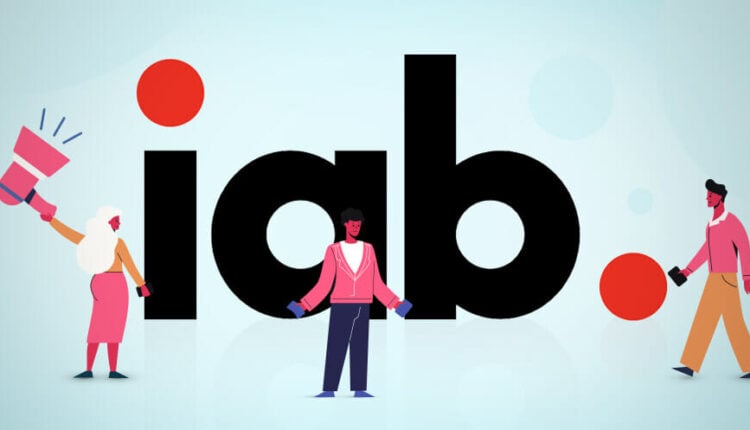In the ever-evolving landscape of digital advertising, where not only innovation but also adaptation reign supreme, a fundamental aspect that underpins its efficacy is adherence to standardized practices. Among the trailblazers in this regard surely stands the Interactive Advertising Bureau (IAB), a pioneering organization instrumental in shaping the digital advertising ecosystem.
Central to its influence are the IAB standard ads, a cornerstone of digital marketing strategies worldwide. These standard ad formats serve as a common language for advertisers, publishers, and technology providers. As a result, it facilitates seamless integration and consistent user experiences across diverse digital platforms.
In this article, we embark on a comprehensive exploration of IAB standard ads, elucidating their significance and the pivotal role they play in driving success in the dynamic realm of digital advertising. Through a nuanced examination of their features, benefits, and implementation, we aim to provide readers with a deeper understanding of why adherence to these standards is henceforth essential for navigating the complexities of modern advertising strategies.
Unveiling the Backbone: IAB Standard Ads Dimensions
Surely an integral facet of the digital advertising landscape, IAB standard ad dimensions delineate the blueprint for effective online advertising. These dimensions, recognized by the Interactive Advertising Bureau (IAB), epitomize the gold standard in ad sizing, thereafter facilitating seamless integration and optimal performance across diverse digital platforms.
The array of IAB standard ad sizes encompasses three primary formats: the ubiquitous Leaderboard (728×90), the versatile medium rectangle (300×250), and the towering skyscraper (160×600). Renowned for their widespread adoption and profitability, these ad units also serve as pillars of the ad tech industry, coveted by advertisers and publishers alike.
Moreover, the IAB’s ad portfolio extends beyond these staples to encompass additional sizes such as the expansive billboard (970×250), the sleek smartphone banner (300×50, 320×50), and the immersive portrait (300×600). While these dimensions offer versatility, it’s the trifecta of Leaderboard, medium rectangle, and skyscraper that reign supreme, owing to their proven track record and market demand.
Publishers are also encouraged to explore a plethora of ad sizes to optimize revenue streams and combat banner blindness effectively. By embracing diverse dimensions, publishers can unlock untapped potential. This, as a result, ensures a compelling and profitable advertising ecosystem for all stakeholders. Additionally, this approach fosters innovation and resilience in the face of evolving consumer preferences and technological advancements, ultimately positioning publishers for sustained success in the dynamic landscape of digital advertising.
Evolving Standards: The IAB New Ad Portfolio
Guidelines delineating the New Ad Portfolio were meticulously crafted by the IAB Tech Lab, thus signifying a noteworthy shift in the landscape of digital advertising. With a paramount focus on enhancing the advertising experience across a multitude of platforms, obviously including mobile apps, websites, and social media, these standards set a new benchmark for industry excellence. Albeit demanding, adherence to these guidelines promises to elevate the quality and effectiveness of digital advertising endeavors, ensuring a more engaging and user-friendly experience for audiences across diverse platforms.
1. The Drive for Innovation
- Embracing ‘new media experiences’ such as virtual reality ads and augmented reality ads.
- Response to evolving consumer preferences and technological advancements.
2. User-Centric Approach
- Impact of privacy regulations like GDPR and CPRA.
- Central role of user intent and privacy in shaping industry changes.
- Importance of safeguarding user interests in the new IAB standard ad unit portfolio.
3. Enhancing User Experience
- Core principles of non-disruptive advertising.
- Empowering users with control over their advertising experiences.
- Features such as clear close buttons and faster load performance.
4. Flexible Ad Units
- Shift from fixed pixel sizes to aspect ratio-based design.
- Addressing diverse device usage and varying screen sizes.
- Maintaining visual integrity across platforms and enhancing operational efficiency for publishers.
5. LEAN Ads
- Principles of light, encrypted, AdChoices supported, and non-invasive advertising.
- Minimizing page latency and prioritizing non-disruptive ad experiences.
- Upholding browsing experience integrity while ensuring effective monetization for publishers.
For publishers traversing the dynamic terrain of digital advertising, the IAB New Standard Ad Unit Portfolio emerges as an indispensable resource. Furnishing valuable guidance on specifications and optimal practices for deploying adaptable and LEAN ad formats, this portfolio also equips publishers with the necessary tools to thrive in an ever-changing landscape. In an industry characterized by perpetual evolution, adherence to these benchmarks surely emerges as essential. Serving as a linchpin for fostering sustainable expansion and cultivating favorable user interactions, these standards thereafter provide a solid foundation for navigating the complexities of digital advertising with confidence.
Expanding Horizons: IAB Standard Sizes for Ads
While browsing the vast expanse of the internet, you’ll undoubtedly encounter familiar ad formats such as the Leaderboard, medium rectangle, and skyscraper. These ad sizes have long been synonymous with digital advertising, seamlessly integrating into web pages and effectively serving their intended purpose.
1. Introduction of New Ad Sizes
- The New Ad Portfolio introduces a diverse range of ad sizes, expanding beyond traditional formats.
- Addition of smartphone banner sizes (300×50 and 320×50), the expansive billboard (970×250), and the elegant portrait ad (300×600).
2. Encouraging Experimentation
- Publishers are urged to venture beyond conventional sizes and experiment with new dimensions.
- Diversification of ad sizes offers opportunities for higher returns and fresh audience engagement.
3. Combatting Banner Blindness
- A significant advantage of incorporating various ad sizes is their potential to counteract banner blindness.
- Banner blindness occurs when users subconsciously filter out standard ad sizes, reducing their effectiveness over time.
- By utilizing a mix of ad sizes, publishers can capture audience attention and mitigate the impact of banner blindness.
The introduction of new ad sizes within the IAB Standard Sizes for Ads marks a pivotal moment, signaling a movement towards enhanced diversity and innovation in digital advertising. Publishers are urged to not only welcome but also to fully integrate these alterations, utilizing a range of dimensions to optimize audience engagement and effectively address the persistent issue of banner blindness. In light of the perpetual evolution of the digital realm, the ability to adapt and experiment with various ad sizes is paramount for attaining advertising success amidst continual transformation.
Unlocking the Advantages of IAB Standardization
1. Streamlined Ad Inventory Creation
- Clear guidelines and specifications simplify the process of ad inventory creation.
- Efficient development and deployment of ad units result from standardized practices.
2. Responsive Ad Sizing
- Transition to aspect ratio-based sizing ensures adaptability across devices.
- Consistent display on smartphones, tablets, and desktops maintains visual integrity.
3. Guidance for Emerging Technologies
- Expansion beyond traditional advertising to encompass new technologies like social media, augmented reality, and virtual reality.
- Invaluable support and expertise for publishers exploring innovative ad formats.
4. Enhanced User Experience
- Strong emphasis on faster loading performance improves overall user experience.
- Speedy ad rendering reduces bounce rates and enhances engagement with content.
5. Optimized Earnings
- Adherence to IAB standards boosts display ad earnings for publishers.
- Maximizes compatibility and effectiveness of ads across platforms, leading to higher click-through rates and conversions.
About IAB and IAB Tech Lab
- IAB, founded in 1996, is a leading association in the interactive advertising field.
- Focuses firstly on creating standards, conducting research, and educating professionals in the advertising industry.
- While adherence to IAB standards is not mandatory, collaboration with IAB-recommended practices can benefit publishers due to the association’s industry influence.
About IAB Tech Lab
- Responsible for developing technical standards for the advertising industry, indeed.
- Chiefly ensures harmonious collaboration among multiple parties in the supply chain.
- Consistent growth in the advertising industry is surely facilitated by widespread adherence to IAB Tech Lab standards.
Conclusion

In conclusion, the adoption of IAB standardization in the realm of digital advertising brings forth a multitude of benefits. These benefits positively impact publishers, advertisers, and users alike. By streamlining ad inventory creation, facilitating responsive ad sizing, and providing guidance for emerging technologies, IAB standards pave the way for innovation and efficiency in advertising practices.
Moreover, the emphasis on improved user experience through faster loading performance enhances engagement and satisfaction, ultimately driving higher ad effectiveness and viewer retention. Publishers stand to optimize their earnings through adherence to these standards, as compatibility and effectiveness across platforms increase click-through rates and conversions.
As pillars of the advertising industry, both IAB and IAB Tech Lab play pivotal roles. They do so in shaping and advancing industry standards and practices. While adherence to these standards is not mandatory, collaboration with IAB-recommended practices aligns publishers with industry best practices and fosters growth opportunities within the digital advertising ecosystem.
In essence, the benefits of IAB standardization extend beyond operational efficiency to encompass enhanced user experiences and optimized revenue streams. As the industry continues to evolve, adherence to IAB standards remains integral to driving sustainable growth. Also for fostering positive user engagements in the dynamic landscape of digital advertising.
Frequently Asked Questions (FAQs)
1. What are IAB standard ads?
- IAB standard ads are ad units that adhere to guidelines set by the Interactive Advertising Bureau (IAB), ensuring consistency and compatibility across digital platforms.
2. Why are IAB standard ads important?
- IAB standard ads provide a common framework for advertisers, publishers, and technology providers, streamlining the ad creation process and enhancing user experiences.
3. What are some examples of IAB standard ad sizes?
- Examples of IAB standard ad sizes include the Leaderboard (728×90), medium rectangle (300×250), and skyscraper (160×600), among others.
4. How do IAB standard ads improve user experience?
- IAB standard ads prioritize non-disruptive advertising practices, such as faster loading times and responsive design, ensuring a seamless integration with content consumption.
5. Do I need to follow IAB standards for my digital advertising campaigns?
- While adherence to IAB standards is not mandatory, following these guidelines can improve ad effectiveness, compatibility, and overall performance across platforms.
6. How do I incorporate flexible ad units into my advertising strategy?
- Flexible ad units, based on aspect ratio rather than fixed pixel dimensions, adapt seamlessly to different screen sizes and devices, maintaining visual integrity and enhancing user experiences.
7. What role does IAB Tech Lab play in the development of IAB standards?
- IAB Tech Lab is responsible for developing technical standards for the advertising industry, ensuring harmonious collaboration among various stakeholders and fostering consistent growth.
8. Can following IAB standards optimize ad earnings for publishers?
- Yes, adherence to IAB standards can optimize ad earnings by maximizing ad compatibility, effectiveness, and user engagement, leading to higher click-through rates and conversions.
9. How can I learn more about IAB standards and best practices?
- Publishers and advertisers can access resources and guidelines provided by the Interactive Advertising Bureau (IAB) and IAB Tech Lab, including the IAB New Ad Portfolio and other educational materials.
10. Are there any future developments or trends in IAB standardization?
- Yes, as the digital advertising landscape evolves, IAB standards may continue to adapt to emerging technologies and industry trends, such as augmented reality, virtual reality, and evolving privacy regulations. Stay updated with industry news and resources for the latest developments.


